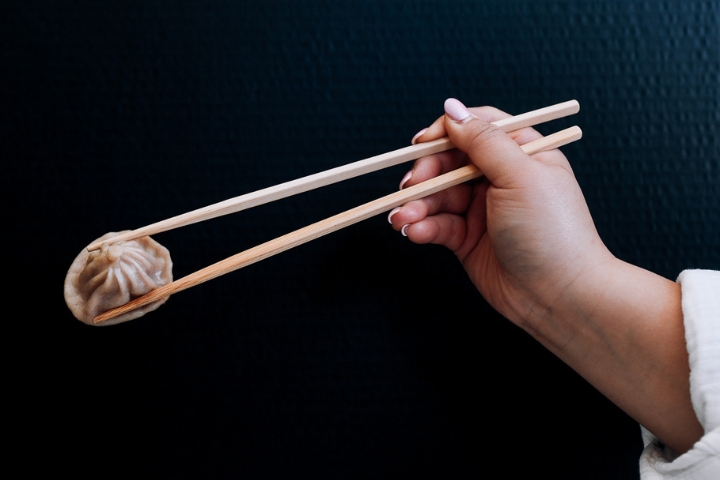Learn about how to use Chopsticks. Initially, the prospect of using chopsticks may appear challenging, particularly for individuals accustomed to utilizing forks, knives, or spoons during meals.
Yet, fret not; with consistent practice and a touch of perseverance, honing the dexterity required to wield chopsticks adeptly is attainable.
This comprehensive guide aims to demystify the process, offering step-by-step instructions on mastering fundamental techniques, ranging from proper grip techniques to the delicate art of handling various culinary delights with finesse. By following these guidelines diligently, you’ll soon find yourself navigating the world of chopsticks with confidence and grace.
How To Use Chopsticks:
Step 1: Understanding the Basics of Chopsticks
Chopsticks are a pair of equal-length sticks, typically made from materials like wood, bamboo, plastic, or metal. The key to using them is precision and control, which comes from how you hold and maneuver them.
Step 2: How to Hold Chopsticks
- Start with the Bottom Chopstick:
- Hold the first chopstick like you would a pen or pencil, but a little lower. This chopstick should rest in the groove between your thumb and index finger, with the other end resting on the side of your ring finger. This chopstick remains stationary and acts as a support.
- Position the Top Chopstick:
- Place the second chopstick between your thumb and index finger, holding it like a pencil. The tip of this chopstick should align with the tip of the bottom chopstick. Unlike the bottom chopstick, the top chopstick will move to grip the food.
- Grip and Control:
- The key to using chopsticks is controlling the top one with your thumb, index, and middle fingers while the bottom one stays relatively still. Practice opening and closing the chopsticks by moving the top one while the bottom one remains in place.
Step 3: Practice the Motion
To get comfortable with the motion, practice picking up small objects like grains of rice, beans, or even marbles. This will help you develop the precision and control needed for eating.
- Open and Close: Start by practicing the basic open-and-close motion of the chopsticks. This motion is the foundation of using chopsticks and is essential for picking up food.
- Pick Up Larger Objects: Once you’re comfortable with the open-and-close motion, practice picking up larger objects like pieces of fruit or vegetables. These are easier to grip and will help build your confidence.
- Try Different Foods: Experiment with different textures, like soft tofu or slippery noodles, to challenge yourself and improve your skills.
Step 4: Common Mistakes to Avoid
- Holding Chopsticks Too Tightly: A common mistake is gripping the chopsticks too tightly, which can lead to cramping and difficulty maneuvering. Try to hold them lightly, using just enough pressure to keep them stable.
- Uneven Chopsticks: Ensure that the tips of the chopsticks are aligned. If one chopstick is higher than the other, it can be challenging to pick up food properly.
- Moving Both Chopsticks: Only the top chopstick should move. If both chopsticks are moving, it will be difficult to grasp food effectively.
Step 5: Practicing Etiquette
Using chopsticks isn’t just about technique; it’s also about etiquette, especially in formal settings or when dining in Asian cultures. Here are a few tips to keep in mind:
- Don’t Point: Avoid pointing your chopsticks at people or objects, as this is considered rude.
- Don’t Stab Your Food: Chopsticks are meant for picking up food, not stabbing it. Stabbing your food is considered poor manners.
- Don’t Cross Your Chopsticks: When resting your chopsticks on the table, don’t cross them. Instead, place them parallel to each other on a chopstick rest, if available.
- Don’t Play with Chopsticks: Chopsticks are not toys. Avoid using them to drum on the table or play with your food.
Why Learn to Use Chopsticks?
Before diving into the how-to, it’s worth understanding why learning to use chopsticks is beneficial:
- Cultural Appreciation: Chopsticks are the primary eating utensils in many Asian cultures, including China, Japan, Korea, and Vietnam. Learning to use them is a way to show respect and appreciation for these cultures.
- Practicality: If you enjoy Asian cuisine, being able to use chopsticks allows you to eat in a more authentic way, enhancing your dining experience.
- Dexterity: Using chopsticks improves fine motor skills and hand-eye coordination.
Learning to handle chopsticks can be an enjoyable and gratifying experience. It introduces you to new dining experiences and connects you with people from various cultures.
Using the steps indicated in this article, you’ll be well on your way to mastering this ancient ability. So the next time you sit down for a meal that requires chopsticks, you’ll be prepared to dive in with confidence.





GIPHY App Key not set. Please check settings